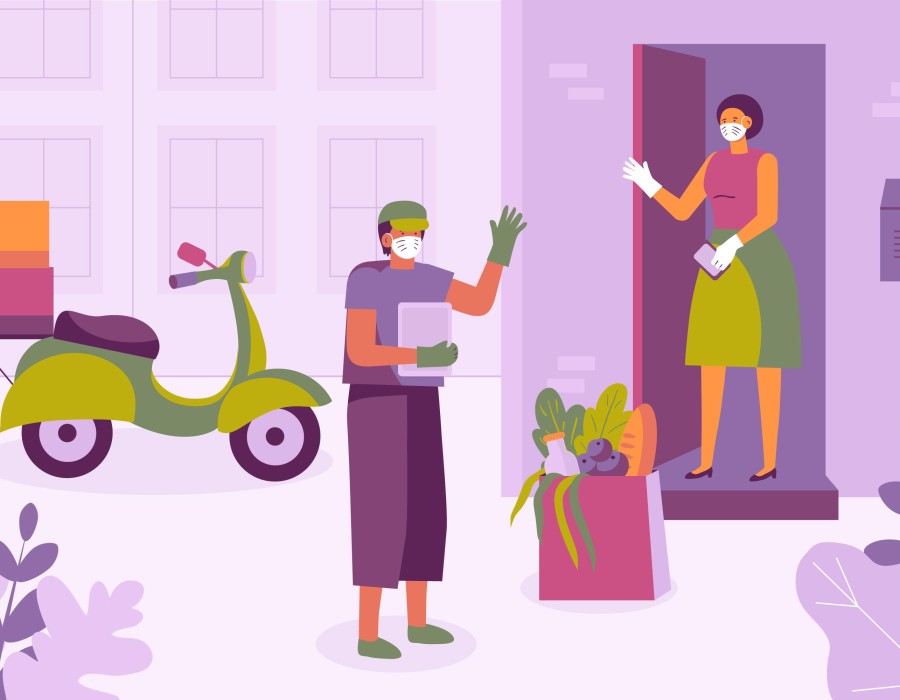The process of developing a food delivery service similar to DoorDash is complex and requires careful planning, reliable development, and ongoing optimization.
This post outlines the crucial elements and procedures required to create a profitable food delivery app.
Understanding the Market and Target Audience
Knowing your target market and the state of the market are essential before you start developing. DoorDash's success can be attributed to its focus on meeting the varied needs of its customers in both urban and suburban areas. App functionality and design are determined by researching potential users' interests, behaviors, and pain points.
Defining the Core Features
A successful food delivery app requires a set of core features that meet user expectations. These typically include:
- User-Friendly Interface: The application should have a simple layout that makes ordering fast and easy to use.
- Real-Time Order Tracking: Give customers the ability to monitor their orders in real-time to increase transparency and lower anxiety.
- Payment Integration: Accept a variety of payment options, such as cash on delivery, digital wallets, and credit cards.
- Reviews and ratings: Encourage consumers to leave comments and score their experiences, as this is essential for ongoing development.
- Notifications: Push notifications alert users to updates, promotions, and the status of their orders.
Choosing the Right Technology Stack
Your food delivery app's performance and scalability depend on your choice of technological stack. To make sure the application functions well under extreme stress and can expand as the user base increases, great consideration must go into selecting the front-end, back-end, database, and server technologies. For example:
- Front-End: Technologies like React Native or Flutter can be used to create a seamless and responsive user interface.
- Back-End: Node.js or Django are popular choices for building robust back-end systems that handle user requests and data processing.
- Database: A reliable database such as PostgreSQL or MongoDB is necessary to store user data securely and efficiently.
Building Partnerships with Restaurants
An app for food delivery is only as good as its relationships with nearby eateries. Developing and preserving connections with a range of restaurants—from big franchises to neighborhood gems—guarantees a varied menu selection for customers. To maintain profitability, this also entails negotiating advantageous terms, such as commission rates and shipping costs.
Implementing a Strong Logistics System
Effective logistics are the foundation of any meal delivery business. It is crucial to create an algorithm that reduces delivery times, orders to drivers, and optimizes delivery routes. Maintaining service quality will also be aided by incorporating a system that keeps an eye on driver performance and controls fleet availability.
Testing and Launching the App
Thorough testing is required before launch in order to work out any flaws and guarantee a seamless user experience. This involves evaluating the app's usability, security, and load to ensure it can withstand high traffic levels without crashing.
The app can be released into the market using a phased rollout plan after testing is finished. Initially launching a beta version in a limited area enables the gathering of input and additional optimization prior to a full-scale rollout.
Marketing and User Acquisition
Attracting users is the next stage after the app is online. Downloads and user engagement can be increased with a complete marketing plan that incorporates social media campaigns, digital advertising, and collaborations with influencers and bloggers. Incentives such as loyalty programs, referral prizes, and discounts might encourage users to download and use the app.
Conclusion
It takes a thorough grasp of the business, the appropriate technology stack, solid relationships with restaurants, and a food delivery app development company to create a food delivery service like DoorDash. You can make a competitive and user-friendly app that sticks out in the crowded meal delivery industry by concentrating on four essential components.






Comments